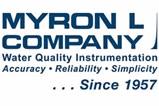The Basics: ORP and Free Chlorine Monitoring

Oxidation Reduction Potential or Redox is the activity or strength of oxidizers and reducers in relation to their concentration. Oxidizers accept electrons, reducers lose electrons. Examples of oxidizers are: chlorine, hydrogen peroxide, bromine, ozone, and chlorine dioxide. Examples of reducers are sodium sulfite, sodium bisulfate and hydrogen sulfide. Like acidity and alkalinity, the increase of one is at the expense of the other.
A single voltage is called the Oxidation-Reduction Potential, where a positive voltage shows a solution attracting electrons (oxidizing agent). For instance, chlorinated water will show a positive ORP value whereas sodium sulfite (a reducing agent) loses electrons and will show a negative ORP value.
Get unlimited access to:
Enter your credentials below to log in. Not yet a member of Water Online? Subscribe today.
